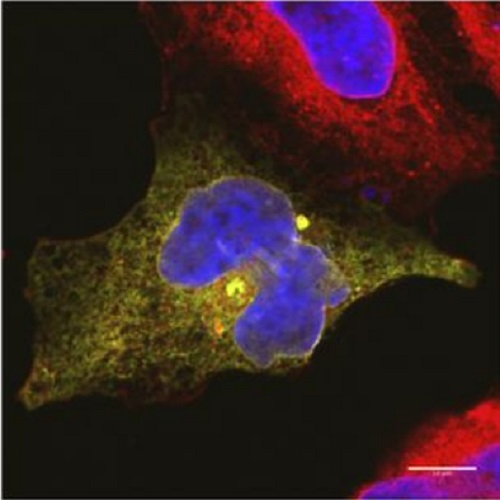CDK5 regulatory subunit-associated protein 1-like 1 (CDKAL1) is a tail-anchored protein in the endoplasmic reticulum (ER) of insulinoma cells.
Genome-wide association studies have led to the identification of numerous susceptibility genes for type 2 diabetes. Among them is Cdkal1, which is associated with reduced ?-cell function and insulin release. Recently, CDKAL1 has been shown to be a methylthiotransferase that modifies tRNA(Lys) to enhance translational fidelity of transcripts, including the one encoding proinsulin. Here, we report that out of several CDKAL1 isoforms deposited in public databases, only isoform 1, which migrates as a 61-kDa protein by SDS-PAGE, is expressed in human islets and pancreatic insulinoma INS-1 and MIN6 cells. We show that CDKAL1 is a novel member of the tail-anchored protein family and exploits the TCR40/Get3-assisted pathway for insertion of its C-terminal transmembrane domain into the endoplasmic reticulum. Using endo-?-N-acetylglucosaminidase H and peptide:N-glycosidase F sensitivity assays on CDKAL1 constructs carrying an N-glycosylation site within the luminal domain, we further established that CDKAL1 is an endoplasmic reticulum-resident protein. Moreover, we observed that silencing CDKAL1 in INS-1 cells reduces the expression of secretory granule proteins prochromogranin A and proICA512/ICA512-TMF, in addition to proinsulin and insulin. This correlated with reduced glucose-stimulated insulin secretion. Taken together, our findings provide new insight into the role of CDKAL1 in insulin-producing cells and help to understand its involvement in the pathogenesis of diabetes.

- J. Biol. Chem. 2012 Dec 7;287(50):41808-19
- 2012
- Medical Biology
- 23048041
- PubMed
Enabled by:
